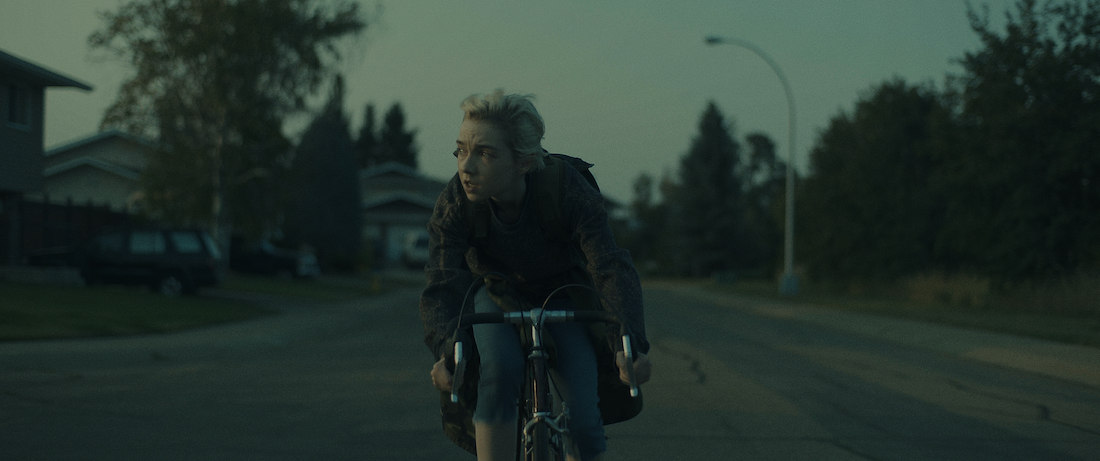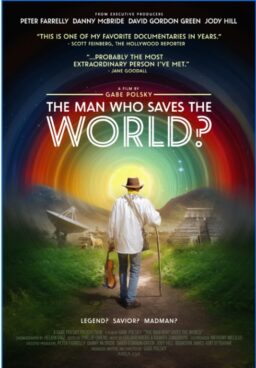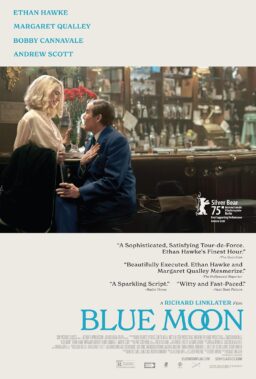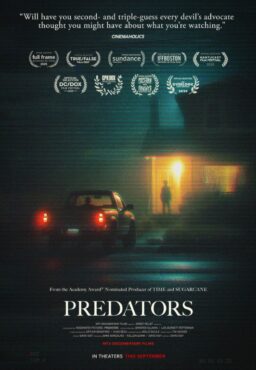Anthony Scott Burns’ world premiere film “Come True” is one of the true standouts of this year’s festival, for all of its ambition, confidence, and creativity in telling a story about a haunted sleep study. At first it’s the way in which Burns presents dreams as steadily floating through the shadows, like someone didn’t turn on the lights—the camera moves forward and you’re not entirely sure what you’re looking at. Then, a figure. And eyes. Burns has a lot of more unsettling tricks up his sleeves, but it’s a testament to his craft that he’s made something that mixes lo-fi sci-fi ingenuity with John Carpenter’s “The Prince of Darkness.”
Before it gets truly weird, Burns grounds the story (with co-story credit to Daniel Weissenberger) in the struggles of Sarah (Julia Sarah Stone), whose dreams we saw at the beginning. She’s a high school student from an abusive household, who spends her restless nights sleeping at friends’ places, or on a local playground. An ad for a sleep study sounds like just the ticket for some peaceful rest, and Burns’ economical but emotional story quickly gets us to a place where we both deeply care about this character, and have the same curiosity about how the scientists are going to monitor her disturbed rest. It turns out that the scientists, including Landon Liboiron’s Jeremy, can watch a patient’s dream in a fuzzy reception, one of the other ways that Burns makes great use of vague imagery to make you afraid of what you can’t see.
There is a freewheeling sense to the movie that makes it so compelling, as writer/cinematographer/editor/director Burns doesn’t follow a predictable structure, and yet treats his building sequences with a great deal of care and detail. It only starts as a movie about the sleep study, and in all of its confidence it takes on the lucidity of sleeping itself, in part because of the neon tints given to non-dream scenes. Burns constructs his story by tone instead of obvious plotting, and receives excellent help from a score by Pilotpriest and Electric Youth, whose lush synths take fill in the emotional beats where dialogue would usually be. It’s a movie you sink into, making its nightmares all the more effective when they sneak up on you.
A lot of indie genre movies use the recognizable components as an excuse for cliches—“Come True” builds from expectations to be its own, wonderful thing, even if some narrative directions are more “Huh?” than awe. In particular, it all leads to an ending that has polarized other critics covering Fantasia, but that feels to be part of the boldness that makes this sci-fi gem so compelling, and fairly radical. “Come True” wants to be the kind of sci-fi movie that warrants multiple viewings, and gain a cult following. It deserves them.

The latest from “The Strangers” director Bryan Bertino would pair neatly in a double feature with this year’s horror movie “Relic,” in how it too talks about the horror of taking care of sick parents, and facing their dwindling mortality head-on. But world premiere title “The Dark and the Wicked” is even bleaker, slathered in grief and pain as it depicts a sister (a slowly tormented Marin Ireland) and brother (Michael Abbott Jr.) who look after their mother and their dying father. While they spend time on the family farm, they learn more about what comforts their parents have found in such isolation, especially when it comes to hardcore Christianity. Something else is in this house on the prairie, as metaphors go, and Bertino’s story gradually reveals a more sinister force that has these sad characters becoming even more distraught. This is an unsettling movie that is more admirably brutal than it is outright scary, though it’s certainly the work of a horror filmmaker who is ripping out their heart so that we can relate.
The mood of “The Dark and the Wicked” makes for one of the slowest burns I’ve experienced throughout the festival this year, and that austerity that can work for it, or against it. On the plus side, the movie effectively corresponds its complete seriousness, and makes its shocking violence (including images of suicide) all the grim when it does arrive. But Bertino also uses some corny horror choices (like how he visualizes the dark force, or builds up a jump scare in a shower) that show the movie’s clumsiness in mixing horror that’s meditative and then abrasive. And there’s something to be said that if the film felt tighter, it might have made an even deeper impact. Instead, Bertino wants you to sit with it, and wallow.

As part of the festival’s slightly art-house Camera Lucida collection, Fantasia had the North American premiere of a nightmarish film from debut writer/director Sabrina Mertens, called “Time of Moulting.” It announces a compelling, creepy vision from the writer/director, who often stages this story as if we were the fourth wall of a dollhouse, looking in on an exceptionally cluttered 1980s German home, and spending extended time with young Stephanie (Zelda Espenscheid) and her two glum parents. It’s a coming-of-age story for Stephanie, in part, as she realizes her isolation but also her disinterest of people. The movie is far more atmospheric than it is plot driven, largely comprised of extended scenes where the camera doesn’t move, and the characters also barely move, but the production design and the lighting stand out. It’s the kind of movie that is so calibrated, and in turn engrossing, that you start to notice each and every piece of clothing, or knick-knack, that’s scattered on the frame.
For a movie that grabs your attention with nothing overt, two things stand out: the performance from Espenscheid, who plays young Stephanie, is incredible, especially given the extended lengths for each scene. But there’s something also to be said about how Mertens creates a sense of unease in the story by gradually spiking it with disorienting imagery, as when Stephanie opens up a hook chest that reveals butcher’s utensils, and admires a giant cleaver. In an unusually cliche move, Mertens sometimes embraces loud warbling bass sounds to indicate something sinister might be in the making, but it’s more forgivable with the story’s haunting qualities. Though it uses sparse movement and clear plot development, Mertens’ debut is effectively disorienting, and the clutter that surrounds Stephanie becomes claustrophobic in a way that horror movies rarely are.

“Unearth” is an environmental message movie that comes through as clear as a foghorn, without any kind of nuance with the horror tropes it eventually falls back on. Directed by John C. Lyons and Dorota Swies, the world premiere title details the damage fracking does to two different families and their large plots of land in a forgotten part of America. Struggling mechanic George (Marc Blucas) sells his land to a predatory corporation, and everyone suffers for it—the water is infected, dust is always in the air, there’s a constant rumble from the machinery. In the brief images of actual fracking, something gets knocked or crushed and unleashed, and a terror is unleashed that in turn destroys these Americans.
There is certainly something to be said about the evils of fracking, and a way that horror can be used to express those feelings, but “Unearth” is far too drawn out and clumsy to lead the cause. The movie feels like it’s wasting its time for a large share of its run-time, following these different people and subplots that add up to little (about being a new mother, or being a closeted lesbian, or having sex with your friend’s dad), while images of blue-collar America are included in-between roughly a million cuts to black. These characters do have dreams and exemplify a meaningful spirit, like Adrienne Barbeau’s farmhand Kathryn, but maybe they’d be of better use in something that’s not “Fracking Madness.” Eventually “Unearth” turns into a gnarly soap opera, and moments of shocking violence are met with an eye-roll instead of the shock that comes from winding up an audience.
“Unearth” only really has some impressive make-up work once the horror actually, finally kicks off, involving a painful and disturbing change to the characters’ bodies. The movie doesn’t make clear what is happening exactly, nor does it have to, but it bungles even its thesis statement. In how this story presents it, it’s almost like fracking finally lets people know that there’s something bad in the soil. That the movie can’t even make its argument effectively is a death knell, and indicative of how misconceived it is with such a compelling concept.











